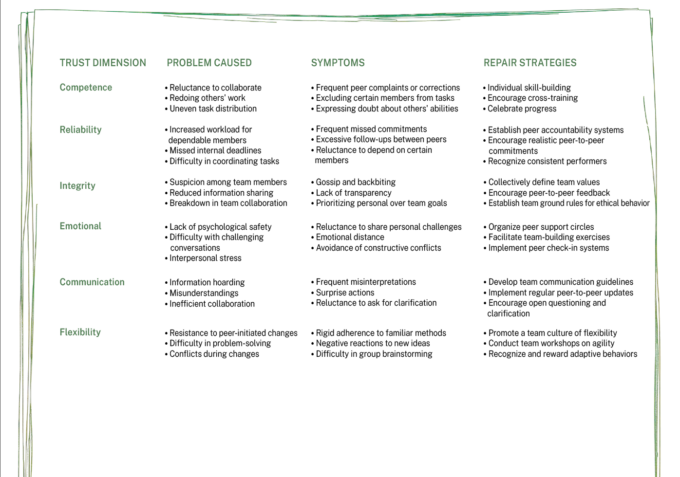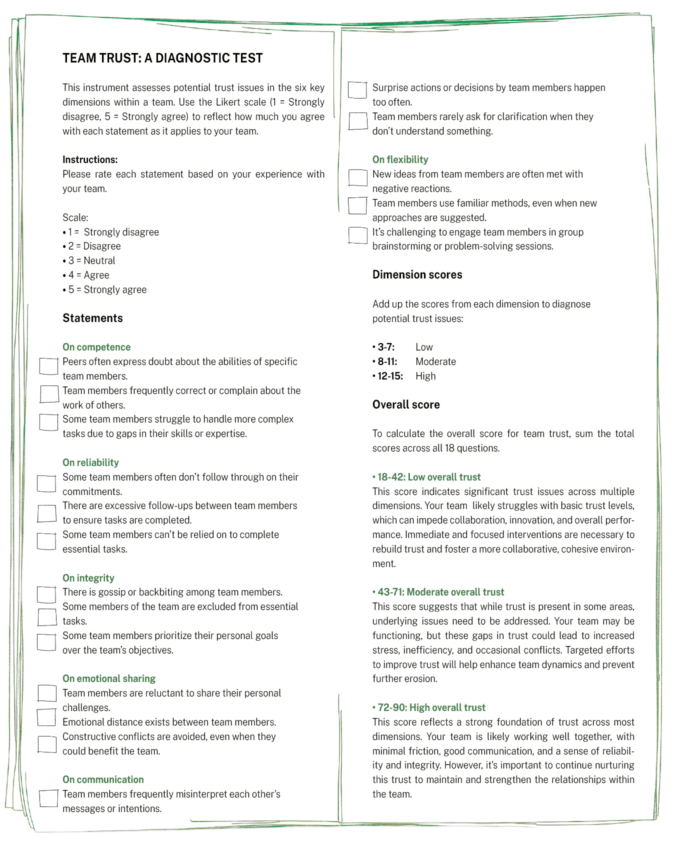
Why leaders should learn to value the boundary spanners
Entrepreneurial talent who work with other teams often run into trouble with their managers. Here are ways to get the most out of your ‘boundary spanners’...
Audio available

by Michael D. Watkins Published April 29, 2025 in Team building • 7 min read • 
When Tony Banet stepped into his role as CEO of Especias Hispania’s North America division*, he inherited a team fractured by distrust. During the six-month leadership gap before his arrival, intense battles had erupted between marketing teams competing for resources to support new product launches. The previous CEO had created a cut-throat culture where individual success was all that mattered. This had resulted in what Banet described as “pervasive protectionism”. Team members focused on defending their territories instead of supporting collective success. Key executives played politics and withheld information, while marketing leaders engaged in constant turf wars. Even potential partners had withdrawn due to the toxic team dynamics.
Banet knew he would have to diagnose and repair these multifaceted problems before he could improve the team’s performance. New leaders often inherit teams with serious trust issues – not just isolated breakdowns between individuals but systemic problems that undermine performance.
Rebuilding trust is essential if you want to lead a high-performing team. However, this takes more than the usual leadership skills. You will first need to become an investigator to uncover and understand the sources of damage. Then, you need to be a healer to fix the foundations of trust.
Trust breakdowns can stem from many sources: we’ve all seen these play out and perhaps suffered the consequences. Your predecessor might have pitted team members against each other, as Banet discovered. Long-standing personality clashes may have created deep-seated tensions. Differing work styles may have resulted in chronic misunderstandings. Organizational changes like mergers or downsizing could have left the team insecure and defensive. A history of unmet expectations or past failures, whether from previous leadership or between team members, might have gradually taken its toll.
Your awareness of these issues and other trust deficits is the first step toward creating a more cohesive, high-performing group. Once you have a better idea of the nature of the problems, you can look to implement targeted strategies to address them, ultimately fostering an environment where trust can be rebuilt and strengthened over time.
These “repair” strategies take many forms and should be tailored to the types of trust breakdowns you face. For example, if there is unhealthy competition or personality clashes, you might engage the team in defining a shared set of values and rules for collaborative behavior. If there are many misunderstandings, consider establishing communication guidelines and encouraging a more open environment.
However, before you embark on this two-step process of diagnosis and repair, it’s important to understand the different kinds of trust that influence a team’s performance. Insight into the multidimensional nature of trust will empower you to apply the appropriate repair strategies, just as a doctor knows what medicine to prescribe for each ailment.

“Insight into the multidimensional nature of trust will empower you to apply the appropriate repair strategies, just as a doctor knows what medicine to prescribe for each ailment.”
Team trust is not a monolithic concept; it embodies many meanings and manifests itself in various forms: confidence in a colleague’s expertise, reliance on their word, faith in their intentions, willingness to show vulnerability, openness in sharing information, and adaptability to change.
To help clear a way through the fog, I have developed a framework for understanding, diagnosing, and repairing trust issues based on six key dimensions of trust.
Let’s explore these six dimensions one by one (see table below) and examine how they show up in the workplace. What kinds of problems can emerge within your team based on the dimension of trust in question? What signs should you watch for? And what specific strategies can be implemented to restore trust in your team?

Diagnosing and repairing trust issues in teams in a way that builds lasting, robust trust requires a systematic and sustained approach, not just knowledge. It’s one thing to recognize specific trust problems and symptoms or to know a few appropriate repair strategies to ease tensions; it’s another prospect entirely to transform a fractured, underperforming team’s dynamics and results.
With this in mind, here is a seven-step roadmap to help you navigate the entire complex and sensitive process, from diagnosis and repair to monitoring and leadership.
By understanding the six dimensions of trust and employing a systematic approach that includes assessment, root cause analysis, and targeted intervention, you can rebuild and strengthen trust in your team.
Banet rebuilt trust by fostering communication, accountability, and collaboration. He encouraged open dialogue, reinforced shared goals, and ensured team members had clear roles and responsibilities. He helped shift the team’s mindset from competition to cooperation by promoting transparent communication and aligning incentives with collective success.
He also led by example, modeling trust and consistency in his actions while encouraging others to do the same. He facilitated conversations that addressed past tensions, established clear expectations, and created opportunities for cross-functional collaboration.
Although it took some time, these efforts improved relationships and team cohesion. Trust levels had visibly improved within months, and the team operated with greater alignment. Banet’s example illustrates that even in fractured teams, trust can be restored through deliberate cultural change, ultimately paving the way for high performance and long-term success.
Diagnosing and repairing trust issues within teams is a complex but essential process for fostering high performance and well-being. By understanding the six dimensions of trust and employing a systematic approach that includes assessment, root cause analysis, and targeted intervention, you can rebuild and strengthen trust in your team.
Keep in mind that trust is delicate and can be easily broken, but with consistent effort and commitment, it can also be repaired and reinforced. As teams navigate the challenges of modern work environments, those prioritizing trust-building will be better equipped to collaborate effectively, innovate, and achieve their goals.
Click here to take the Team Trust Diagnostic Test.
*Names have been changed to protect confidentiality.


Professor of Leadership and Organizational Change at IMD
Michael D Watkins is Professor of Leadership and Organizational Change at IMD, and author of The First 90 Days, Master Your Next Move, Predictable Surprises, and 12 other books on leadership and negotiation. His book, The Six Disciplines of Strategic Thinking, explores how executives can learn to think strategically and lead their organizations into the future. A Thinkers 50-ranked management influencer and recognized expert in his field, his work features in HBR Guides and HBR’s 10 Must Reads on leadership, teams, strategic initiatives, and new managers. Over the past 20 years, he has used his First 90 Days® methodology to help leaders make successful transitions, both in his teaching at IMD, INSEAD, and Harvard Business School, where he gained his PhD in decision sciences, as well as through his private consultancy practice Genesis Advisers. At IMD, he directs the First 90 Days open program for leaders taking on challenging new roles and co-directs the Transition to Business Leadership (TBL) executive program for future enterprise leaders, as well as the Program for Executive Development.

July 3, 2025 • by Eric Quintane in Team building
Entrepreneurial talent who work with other teams often run into trouble with their managers. Here are ways to get the most out of your ‘boundary spanners’...
 Audio available
Audio available
June 2, 2025 • by George Kohlrieser in Team building
Leadership Honesty and courage: building on the cornerstones of trust by George Kohlrieser Published 17 April 2025 in Leadership • 5 min read DownloadSave Trust is the bedrock of effective leadership. It...
 Audio available
Audio available
May 29, 2025 • by Shelley Zalis in Team building
People don’t work for companies. They work for leaders they trust. And that trust is being tested like never before....
 Audio available
Audio available
May 5, 2025 • by Peter J. Meyers in Team building
The soulless language of management speak leads to uninspired and disengaged teams. Here’s how to sharpen your language skills to become a more effective leader....
 Audio available
Audio availableExplore first person business intelligence from top minds curated for a global executive audience